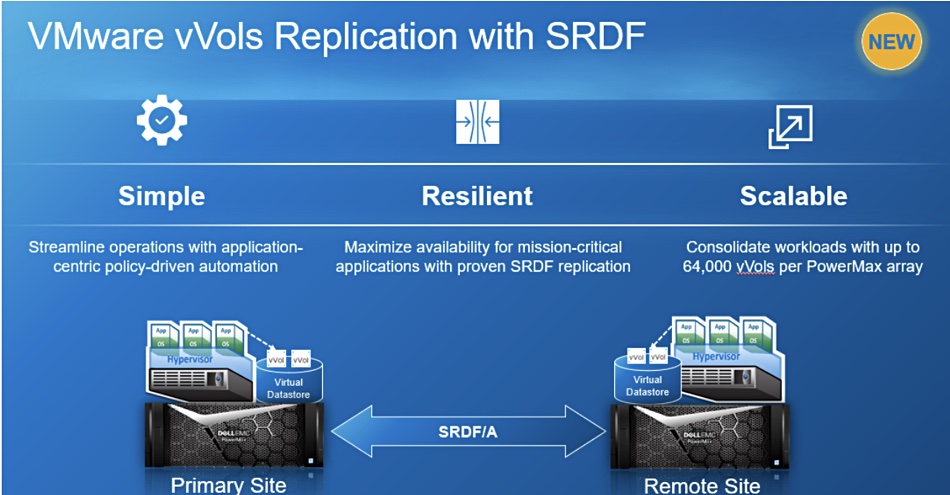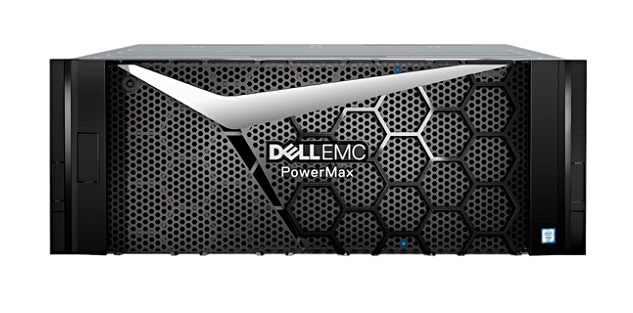Dell EMC today updated the high-end PowerMax storage array to run more VMware Virtual Volumes (vVOLs), migrate data to the public cloud and improve disaster recovery capability.

With today’s update, VMware Site Recovery Manager (SRM) 8.3 can access a PowerMax array replication feature called SRDF/A, to automate VM movement between sites. SRDF maintains real-time or near real time copies of data on a production storage array at a remote site. It can work synchronously or, with the/A version, asynchronously.
A disaster recovery version of SRDF – SRDF/Metro – pairs the remote site target with the primary site. The primary and secondary site arrays may appear as a single virtual device for presentation to a single host or host cluster. If one of the primary arrays is unavailable, a new Smart DR facility maintains data resiliency by copying data from both primary arrays in a cluster to one remote array.
A new CloudMobility feature enables a PowerMax array to move, via snapshots, data to the public cloud or on-premises object storage for cheaper long-term retention. CloudMobility targets are AWS, Azure and Dell EMC’s ECS object storage system. This is a two-way system and data can be returned to the PowerMax array. Using a Dell EMC vApp, PowerMax admins can move snapshot data from S3 object storage to Amazon’s elastic block storage (EBS).
Dell EMC has added Thales end-to-end encryption software to PowerMax arrays.
All these new PowerMax features are generally available.








